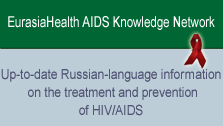Resources for Health Professionals and Patients
| Clinical Characteristics of Kaposi Sarcoma | |
Attached file: |
 (Russian, 434.2 kb)
Clinical Characteristics of Kaposi Sarcoma
(Russian, 434.2 kb)
Clinical Characteristics of Kaposi Sarcoma
|
Link to document(s) | http://www.hivinsite.com/In... |
Author(s): | Krown S. E. |
Document type: | Monographs, Reports, and Book Chapters |
Language: | Russian |
Original language of document: | English |
Primary area(s) of focus: | HIV/AIDS |
Secondary areas of focus: | Malignancies |
Submited by: | Victor Stanilevskiy |
Material written specifically for patients: | No |
Date of entry: | August 31, 2006 |
Pages: | 18 |
| Kaposi sarcoma (KS) was one of the first conditions recognized as an opportunistic sequela of HIV infection, and remains the most common AIDS-associated neoplasm. AIDS-associated KS occurs with increased frequency in all HIV transmission groups compared with the general population, but at a particularly high rate among men who have sex with men (MSM). The epidemiology of AIDS-associated KS has long suggested that an environmental or infectious sexually transmitted cofactor might contribute to the development of KS. The search for such a cofactor led, in 1994, to the discovery of a novel herpesvirus, human herpesvirus-8 (HHV-8), also known as the Kaposi sarcoma-associated herpesvirus (KSHV). HHV-8/KSHV is found in all forms of KS, and infection with the virus appears to be necessary but not sufficient for KS to develop. Other factors believed to be involved in the development of AIDS-associated KS include altered expression and response to growth factors and cytokines, and modulation of KS growth by an HIV gene product, the Tat protein. AIDS-associated KS varies in its presentation from an indolent process with minimal clinical consequences to a disseminated, aggressive disease. | |
Overall user rating: | Not yet reviewed |

 Print-friendly View
Print-friendly View

